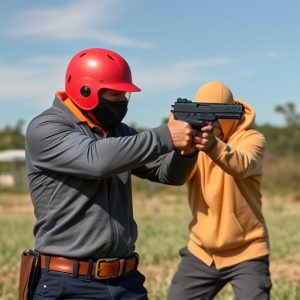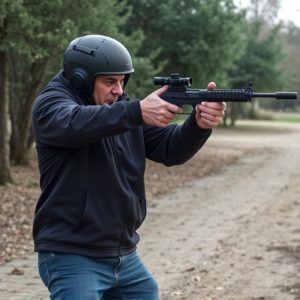Projectile vs Contact Stun Weapons: Safety, Effectiveness & Cost
Stun weapons, including tasers and batons, offer distinct approaches to personal defense with varyin…….
Stun weapons, including tasers and batons, offer distinct approaches to personal defense with varying price ranges and tactical advantages. Projectile stun devices provide long-range de-escalation but are more expensive, while contact weapons excel in close quarters but are budget-friendly. The choice depends on the scenario: projectiles for distance, contact weapons for immediate impact. Pricing for stun guns varies greatly based on features like voltage and construction materials. Understanding legal aspects and local regulations is crucial. When selecting a stun device, consider budget, intended use case, ease of use, weight, grip, and optional features, keeping in mind the wide price range for quality stun guns.
In the realm of personal safety, stun weapons have emerged as a controversial yet effective tool. This article explores two primary types: projectile and contact stun devices, delving into their distinct features, safety implications, and real-world applications. We uncover the ideal user profiles for each, dissecting their effectiveness in diverse scenarios. Additionally, we provide an extensive overview of the price range for quality stun guns, highlighting key factors to consider when making a purchase. By navigating these aspects, individuals can make informed decisions regarding self-defense options.
- Understanding Projectile and Contact Stun Weapons: Key Differences
- Safety Considerations: Who Should Use Each Type?
- Effectiveness in Real-World Scenarios
- Price Range for Quality Stun Guns: A Comprehensive Look
- Legal Aspects and Regulations: What You Need to Know
- Choosing the Right Stun Weapon: Factors to Influence Your Decision
Understanding Projectile and Contact Stun Weapons: Key Differences
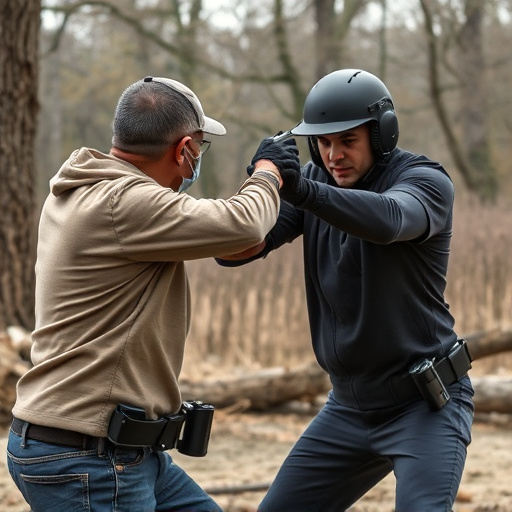
Projectile and contact stun weapons represent two distinct categories within the realm of personal defense devices, each with its unique operational principles and tactical applications. Projectile stun weapons, such as stun guns or tasers, operate by firing an electrical charge at a target, causing muscle contractions and temporarily incapacitating them. The key advantage lies in their range—users can stop an attacker from afar, providing valuable time to escape or call for help. Moreover, these devices often come with a wide price range for quality stun guns, making them accessible to individuals seeking effective self-defense options without close physical interaction.
On the other hand, contact stun weapons, like knuckles or batons equipped with stun features, rely on direct physical contact to deliver an electrical shock. They are designed for closer quarters combat, allowing users to control and subdue an aggressor through rapid strikes while maintaining a level of personal space. Unlike projectile weapons, the effectiveness of contact stun devices can vary based on factors like the user’s skill and the specific design of the weapon, which often limits them to shorter ranges. However, they are generally more affordable, making them a preferred choice for those seeking immediate self-defense solutions within a tighter budget.
Safety Considerations: Who Should Use Each Type?

When considering stun weapons, safety should be the top priority. Projectile stun devices, such as stun guns and tasers, operate by delivering an electric shock to the target from a distance. These weapons are typically recommended for self-defense scenarios where quick detachment or de-escalation is crucial. However, they come with risks; improper use can lead to accidents, and their range limits their effectiveness in close-quarters situations.
Contact stun weapons, often in the form of stun batons or hand strobes, require physical contact to deploy. They are generally safer for individuals who lack training due to their straightforward operation. Stun guns offer a wide price range for quality devices, making them accessible to those seeking personal protection without extensive training. Contact stun tools might be more suitable for professionals like security guards or law enforcement officers who can guarantee responsible handling and proper technique.
Effectiveness in Real-World Scenarios
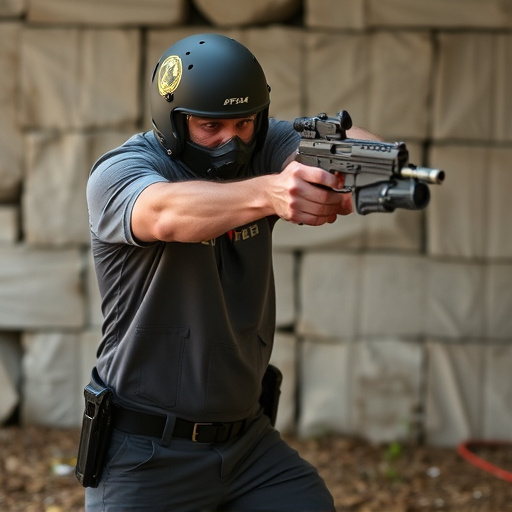
In real-world scenarios, both projectile and contact stun weapons have their distinct advantages and limitations. Projectile stun devices, such as stun guns or tasers, offer a non-lethal way to incapacitate targets from a distance. Their effectiveness lies in the electric current or kinetic force they deploy, which can temporarily paralyze muscles, causing the target to fall to the ground. This makes them ideal for self-defense situations where quick disarming or deterring an attacker is crucial, especially given their ease of use and the relatively wide price range for quality stun guns catering to diverse budgets.
On the other hand, contact stun weapons, like batons or electroshock shields, require direct physical contact with the target. While they may not have the same reach as projectiles, they excel in close-quarters combat scenarios where speed and precision matter most. The immediate impact of these weapons can override an attacker’s defenses, providing a brief window for escape or backup intervention. The effectiveness of contact stun devices is further boosted by their ability to adapt to various hand sizes and fighting styles, making them versatile tools for professionals in law enforcement and security sectors.
Price Range for Quality Stun Guns: A Comprehensive Look
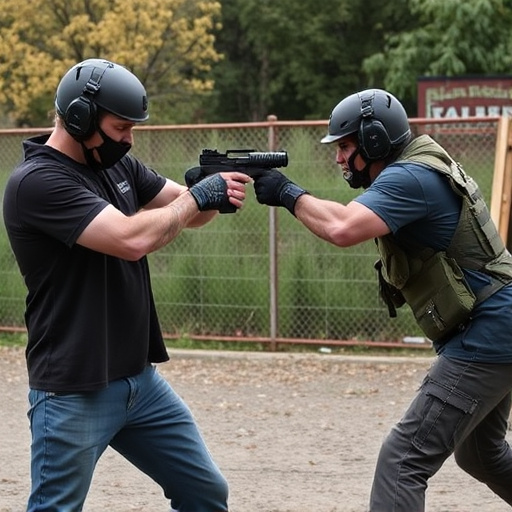
When considering a stun gun for personal protection, one of the primary factors to evaluate is the device’s price range. Quality stun guns vary significantly in cost depending on features like voltage, current, and construction materials. Basic models can be purchased for under $50 USD, offering a budget-friendly option for those new to self-defense tools. However, these entry-level devices may not provide the same level of reliability and durability as their more expensive counterparts.
Moving up the price range, mid-tier stun guns typically cost between $75 and $200 USD. This segment includes models with higher voltage outputs, improved design aesthetics, and additional features like LED flashlights or multiple firing modes. At the high end of the spectrum, premium stun guns can exceed $300 USD. These top-of-the-line devices often boast advanced safety mechanisms, customizable settings, and materials that enhance both performance and comfort during use. Understanding the price range for quality stun guns allows prospective buyers to align their budget with their specific needs and expectations.
Legal Aspects and Regulations: What You Need to Know
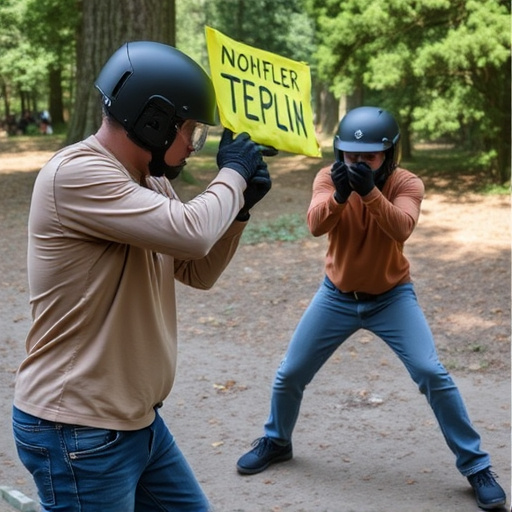
When considering stun weapons, understanding legal aspects and regulations is crucial. The legality of stun devices varies significantly by region and country. In many places, stun guns and other electroshock weapons are classified as firearms and require a permit or license to purchase and own. Some jurisdictions have strict limits on the power output, weight, and overall design of stun devices to ensure they do not cause excessive harm. It’s important to research and comply with local laws to avoid legal repercussions.
The price range for quality stun guns can vary widely depending on factors such as brand, power level, features, and materials used. High-end models often come with advanced safety mechanisms, longer battery life, and more powerful shocks, which can command a higher price tag. Lower-cost options may be suitable for basic self-defense needs but may have less reliable performance or shorter lifespans. Understanding these legal considerations and choosing the right stun device within your budget is essential for personal safety and peace of mind.
Choosing the Right Stun Weapon: Factors to Influence Your Decision

Choosing the right stun weapon involves considering several factors, with budget being a primary one. The price range for quality stun guns varies widely, from affordable entry-level models to high-end devices with advanced features. Your financial comfort zone will dictate the level of protection and performance you can acquire. Beyond cost, consider the intended use case: are you seeking personal defense in close quarters or long-range deterrence? Stun weapons designed for self-defense in tight spaces tend to be smaller, while those for outdoor or distance control may offer longer reach and more powerful jolts.
Additional influences include ease of use, with some models featuring simple one-button activation, while others require a two-step process. Weight and grip are also essential; lighter devices are easier to carry but might sacrifice durability, whereas heavier models provide better balance but could be less discreet. Lastly, features like LED flashlights or alarm systems enhance versatility, but these extras come at an additional cost.
When choosing between projectile and contact stun weapons, understanding their distinct characteristics, safety implications, and legal boundaries is key. Projectile weapons offer distance and surprise advantage, while contact weapons excel in close-quarters situations, providing direct impact incapacitation. The ideal choice depends on personal needs, with considerations for effectiveness, price range for quality stun guns, and local regulations. By weighing these factors, individuals can make informed decisions to ensure their safety and comply with legal requirements.
